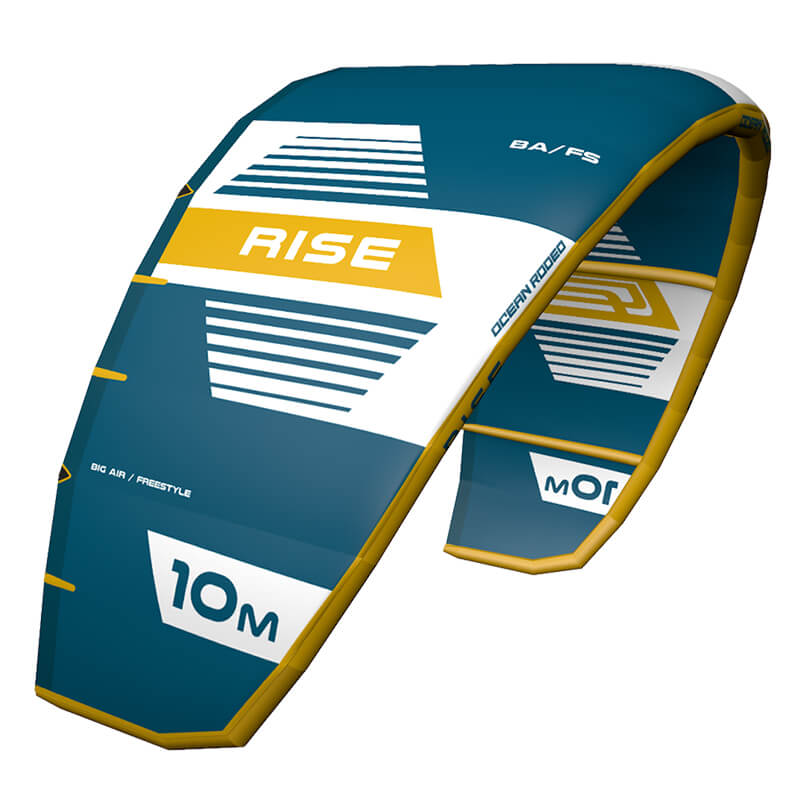When you purchase gear through links on our site, we may earn a small commission. Here’s why you can trust our tests and our affiliate partner.

After many years out of the lineup, the Rise has returned to the OR stable and has been given the ALUULA treatment… With the recent acquisition of Giel Vlugt to the Ocean Rodeo team, and his high-level riding at recent Big Air events that set the world stage for technical ‘high’ riding, Ocean Rodeo have designed a kite that now not only needs to boost and float, but also needs to loop with vigor and consistency to enable those exceptionally high-risk and technical moves to rack up the KOTA points.
With Ocean Rodeo’s close partnership with the latest lightweight frame material ALUULA, this was a logical platform to build from, and required a lot of changes with seaming and manufacturing, so the development period when applying this to an all-new and boundary-pushing kite has been lengthy and thorough. Shape-wise, we’re looking at a daringly high-aspect shape with quite a complete C-shaped arc and a swept wingtip, reminiscent of a modern freestyle kite which has had the aspect ratio knob turned up to 11. Although a five-strut kite, the ALUULA airframe means it still weighs in rather comfortably under most three-strut kites, meaning you get all the benefits in stability a five-strut kite provides with none of the weight gain drawbacks. The bridling is low drag and minimal, and one pulley sits high near the leading edge on the outside of the bridle on each side.
Unusually for such a high-aspect design, the bar feeling is fairly light and the kite has a massive amount of agility considering its mighty span; it spins around its wingtip in a nimble and entertaining fashion. When you do throw the kite around though, you know about it. Power delivery is unapologetically formidable, and it’s a kite that needs flying; it’s a far cry from a lazy man’s park-and-pull freeride kite and is all the more engaging and exciting to ride as a result.
The Rise, even in a 10m, is impressively agile and does not feel at all sketchy when we looped it, which can be the case in other Big Air focused kites when you get above the 9m mark… It whipped round the loops with an aggressive and smooth forward pull, but the most striking feature is how consistent the catch and climb is, which gives you confidence to go deeper and flatter into your loops. For us it is here that the Rise sets itself apart from the pack.
To get your initial height, the Rise is not a simple sheet and lift number. It requires speed, edging, aggressive redirection and timing. When it comes together you’re rewarded with a monumental amount of lift, height and float, far more than you expect in most cases. Heli-looping out of your tricks, again the agility and lighter handling really shines, and it gives an impressive amount of second lift to make for some soft landings.
Materials-wise, the diameter of the leading edge and struts in a kite this shape, if you attempted to manufacture it from Dacron, would barely support itself. This is a prime example of how these new materials can achieve extreme performance kite designs which were previously unattainable with standard materials.
The Rise A-Series has a very clear design objective, and has been built with what feels like absolutely no compromise in both materials and shape. It’s lean, mean and commands respect, requiring a switched on and high-level rider who isn’t afraid to chuck a kite (as well as themself) around.
